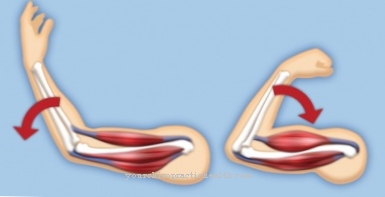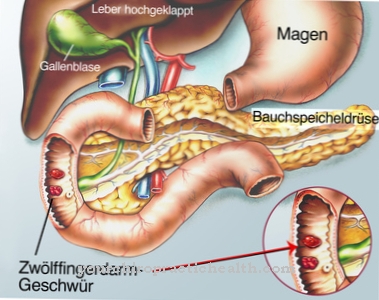With the photopic vision becomes normal Color vision referred to by the so-called M, L and S cones, which are photosensory optimized for the green, red and blue areas. Photopic vision requires a minimum brightness of about 3 to 30 cd / m2 and occurs mainly in the fovea centralis, a small area in the retina. The fovea centralis has the greatest density of cones for sharp color vision, while in the regions outside the fovea centralis mainly so-called rods are located on the retina, which are much more luminous but only allow scotopic vision.
What is photopic vision?
Photopic vision means sharp color vision. It is sensory with the help of the L, M and S cones, which are optimized for the red, green and blue spectral range and reach their greatest density on the retina in the area of the central fovea with a diameter of about 1.5 millimeters.
The particularly sharp vision in the fovea centralis is due to the nervous interconnection of the color cones of almost 1: 1. Almost every single cone is connected to a separate nerve fiber, so that every incident photon can be located relatively precisely in the brain.
The counterpart to photopic brightness vision is scotopic vision in relative darkness, which takes place by means of light-sensitive rods that are mainly located outside the fovea centralis on the retina. The rods are extremely sensitive to light, but are not able to distinguish between colors. This means that scotopic vision is to be equated with monochromatic vision. In addition, the scotopic night vision is associated with a certain blurring, as many rods have to share a nerve fiber, so that the brain cannot locate the incident photons as precisely as with the cones.
Function & task
We humans belong to the diurnal organisms for whom sight is one of the most important sources of information. The ability to see sharp colors even allows non-verbal communication to a certain extent. Strong emotions such as excitement, fear or anger are expressed in facial expressions, on the skin through blushing in certain areas and in the visible body language. The acquisition of nuances in non-verbal communication requires the sharpest possible color vision, i.e. photopic vision.
In addition, photopic, binocular vision enables spatial vision and thus facilitates orientation in three-dimensional space, including distance estimates. Photopic vision has been optimized by evolution in order to offer humans the best possible protection from enemies and other dangers and to make it easier for them to find food.
Provided that there is a corresponding minimum illumination of 3 to 30 cd / sqm, photopic vision is an almost all-encompassing aid in (almost) all situations and serves the brain as an orientation aid in the event of incompatible multisensory information. In such cases, photopic vision serves as a master impulse to which, in case of doubt, all other sensory impressions are aligned, which in many cases can lead to problems such as spatial disorientation.
You can find your medication here
➔ Medicines for eye infectionsIllnesses & ailments
Photopic vision depends on the one hand on the surrounding light conditions as well as on the function of the individual organic components that are related to the functionality of the L, M and S cones. Even if all components involved are in perfect condition, optical illusions can occur, which make orientation difficult and can even cause nausea and vomiting.
While our brain can compensate for short-term discrepancies between vision and vestibular messages, longer-term incompatibilities, which can result from optical illusions, cause problems with malaise. The malaise or subsequent vomiting can be interpreted as a protective mechanism. It is intended to prevent any psychogenic or hallucinogenic substances ingested, on which the discrepancies between the sensory feedback may be based, from causing even more damage.
Illnesses and complaints that have a direct impact on photopic vision cover a wide range of causes. Visual disturbances can arise due to insufficient supply of the cones with oxygen and nutrients due to simple circulatory disorders. The visual disturbances can even be included in a diagnosis as an indicator of circulatory disorders.
In many cases, infectious diseases or genetic degenerations of the retina or cones are the cause of a decrease in vision, as in age-related macular degeneration (AMD). It involves a gradually progressive degeneration of the color sensors in the macula, the yellow spot or fovea centralis.
Another eye disease, so-called glaucoma, also known as glaucoma, leads to visual impairment and even loss of vision due to progressive damage and degeneration of the optic nerve.



























.jpg)